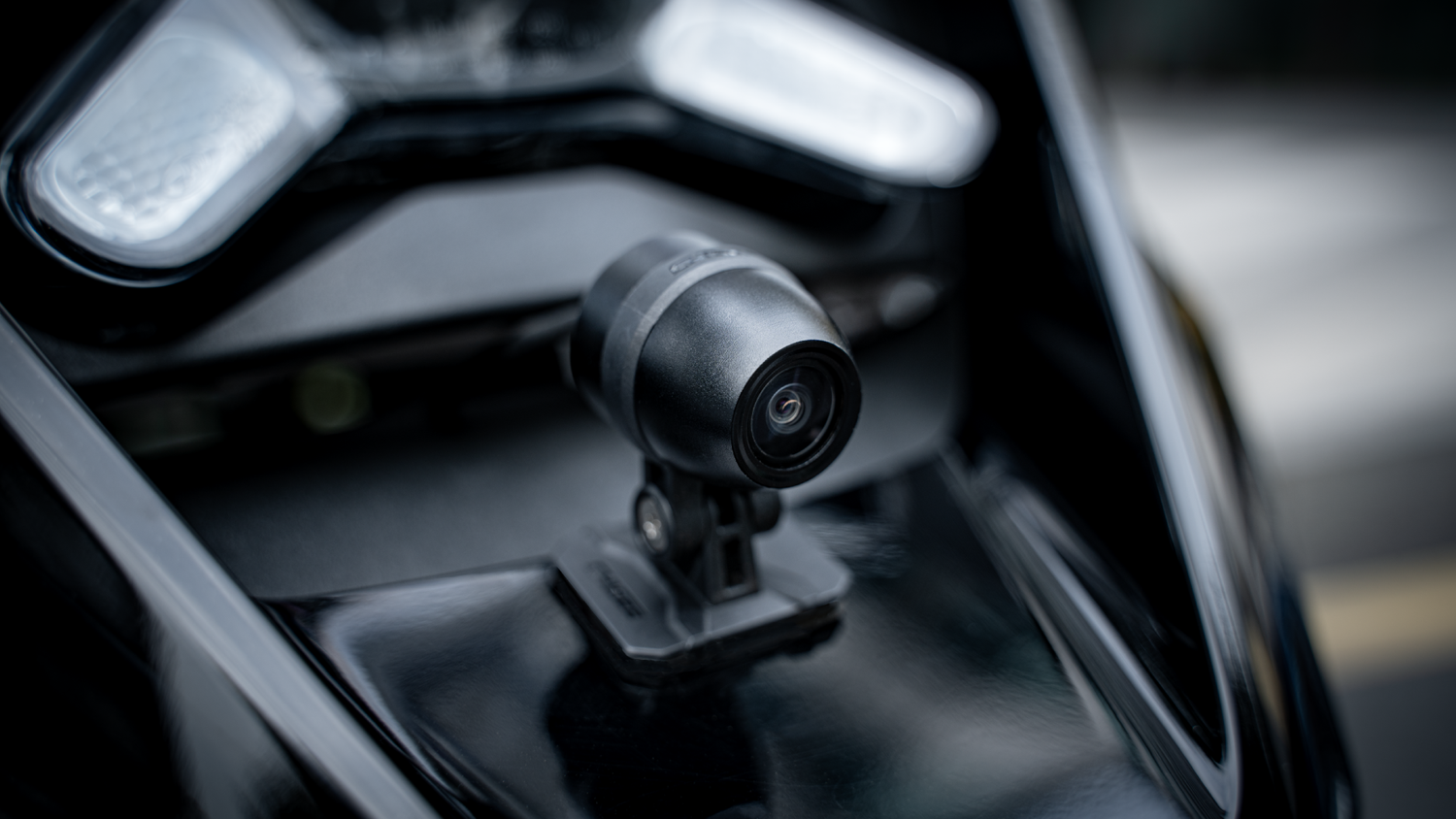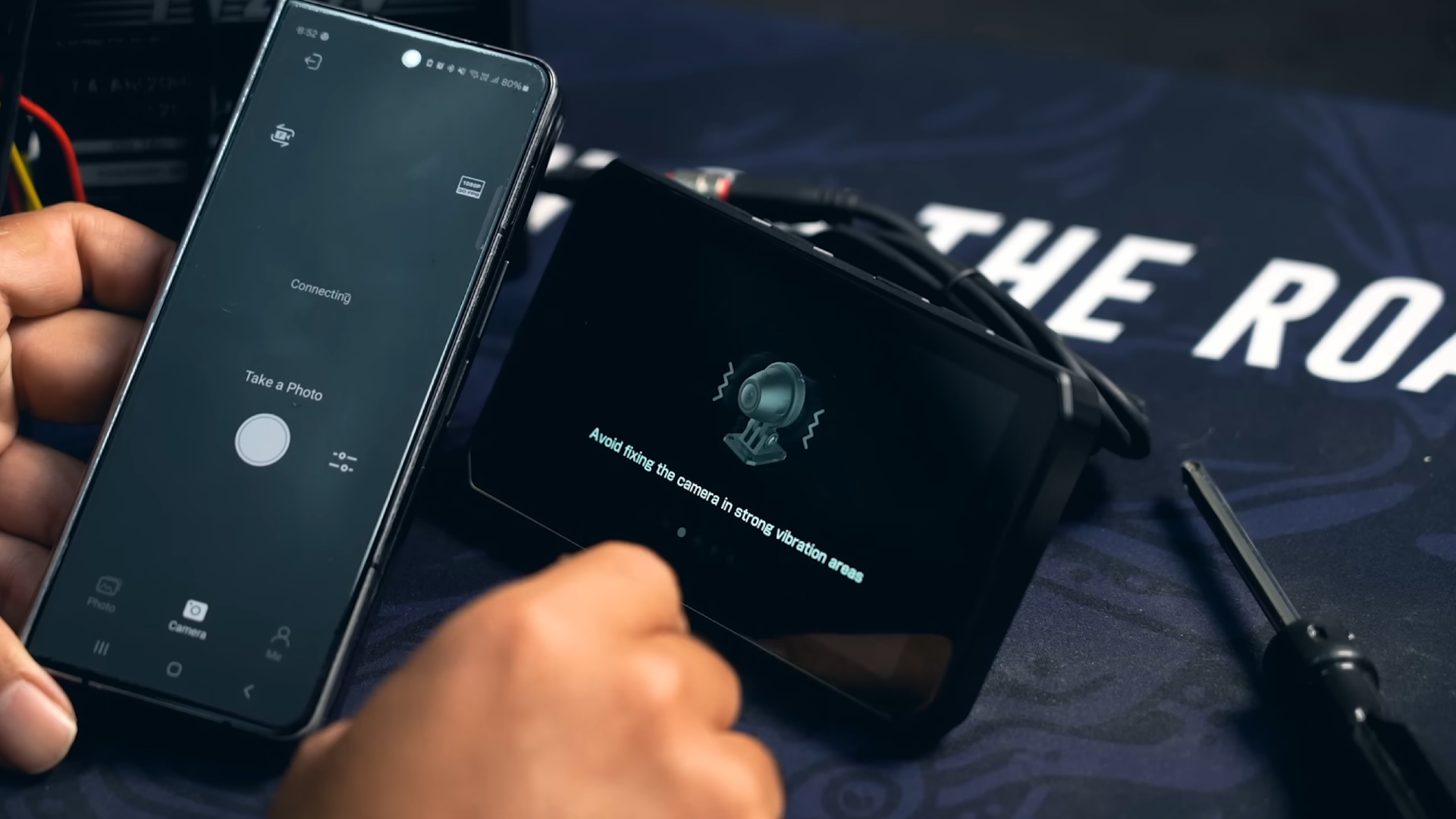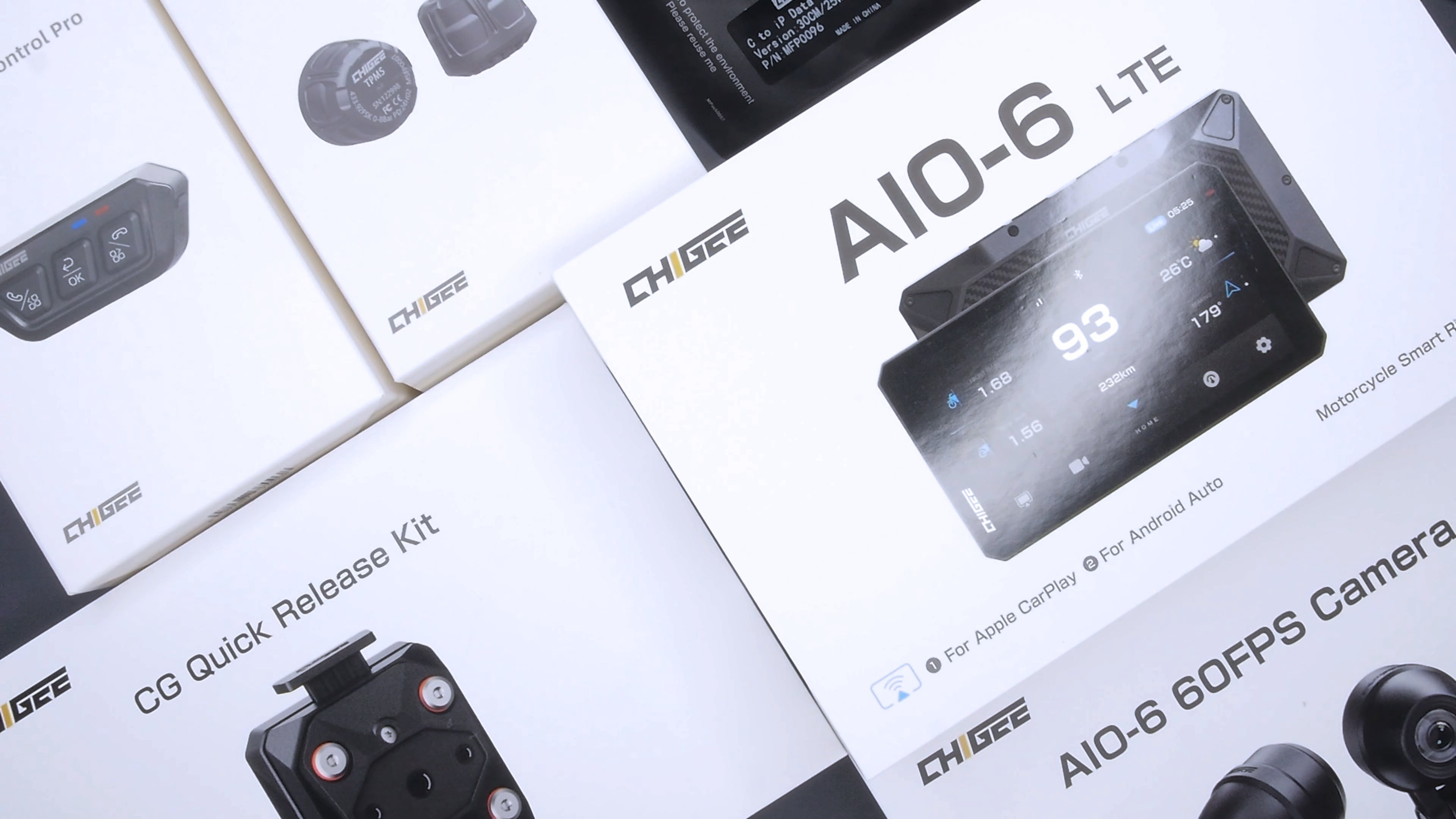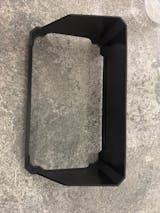Your motorcycle dashcam serves as a black box for your adventures, but here’s the thing: that black box is only as good as the care you give it.
Think of it like your bike’s chain. You wouldn’t hit the road without checking its tension and lubrication, right? Your Moto Dashcam needs the same attention.
Most riders neglect their dashcams until it’s too late.
Dust, heat, vibrations, improper storage, and neglect can ruin your footage and even turn it from a road warrior into a useless brick just when you need it most.
So before you fire up the engine for your next ride, be sure your dashcam is as road-ready as you are. Regular upkeep ensures both longevity and accurate recordings, which are invaluable in many unforeseen cases.
This guide will walk you through 12 expert-backed maintenance tips to keep your motorcycle dashcam in top condition.
Why Motorcycle Dashcams Need Extra Care (Compared to Cars)
Car dashcams sit in a temperature-controlled cabin, while Motorcycle dashcams?
They endure:
● Brutal vibrations from rough roads.
● Rain, dust, and UV exposure.
● Extreme temperatures (freezing winters to scorching summers).
● Power fluctuations from your bike’s electrical system.
Negligence leads to:
● Blurry or unusable footage.
● Corroded connections.
● Dead batteries or SD card failures.
● Overheating shutdowns.
A well-maintained motorcycle camera means reliable evidence, less hassle, and a longer lifespan. Let’s fix yours before it fails you.
1. Regularly Clean the Dashcam Lens (The Right Way)
A clean lens is essential, otherwise, you will end up with useless footage. Over time, dust, dirt, and smudges can accumulate on the lens, diminishing the quality of your recordings.
To maintain clarity:
1. Use a soft, microfiber Cloth (never paper towels; they scratch): Gently wipe the lens with a microfiber cloth to remove surface dust and fingerprints.
2. Avoid Harsh Chemicals: For tough grime, dab (don’t rub) with a lens-safe cleaner. Refrain from using abrasive cleaners or solvents that could damage the lens coating.
Avoid alcohol; it strips coatings.
3. Maintain a regular cleaning schedule: Clean the lens routinely, especially after rides in dusty or rainy conditions.
2. Ensure Secure Mounting (Stop the Shakes)
A securely mounted dashcam is crucial for stable and accurate recordings. Vibrations or loose mounts can lead to shaky or misaligned footage.
To ensure stability:
● Inspect Mounting Hardware: Regularly check the tightness of brackets, screws, and adhesive mounts.
● Use Quality Mounts: Invest in high-quality mounting accessories built to withstand motorcycle vibrations.
● Positioning: Ensure the dashcam is positioned to capture the desired field of view without obstruction.
Chigee dashcams come with robust structural stability features, including aluminum alloy frames with 3-axis shock absorption, ensuring steady performance even on rough terrains.
3. Managing Exposure to Extreme Temperatures
Motorcycle dashcams are exposed to varying temperatures, which can affect their performance and longevity. To protect your device:
● Avoid Direct Sunlight: When parked, position your motorcycle in the shade to prevent the dashcam from overheating.
● Cold Weather Precautions: In colder climates, allow the dashcam to warm up gradually before use to prevent condensation.
● Check Operating Temperature Range: Ensure your dashcam is rated for the temperature extremes in your area.
Chigee dashcams are built for extreme temperatures, operating efficiently between -20°C to 65°C (-4°F to 149°F), making them reliable companions in diverse climates. AIO-6 can withstand 80±5℃ high-pressure tests.
4. Keeping Firmware Updated
Just like smartphones, dashcams benefit from regular software updates. Firmware updates often include performance enhancements and bug fixes. Ensure your device remains up-to-date by enabling Over-the-Air (OTA) updates, a standard feature across Chigee’s product range.
To keep your dashcam up-to-date:
● Regular Checks: Periodically visit the manufacturer's website or use their app to check for updates.
● Enable auto-updates: Chigee’s OTA updates make this easy. Check manually every 3 months if auto-updates are off.
● Follow Update Instructions: Carefully follow and adhere to the provided manufacturer's guidelines to ensure a successful update process when updating firmware to prevent potential issues.
● Backup Settings: Before updating, note your current settings to easily reconfigure if needed.
5. Proper Power Management
A consistent power supply is vital for uninterrupted dashcam operation.
To manage power effectively:
● Direct Wiring: Consider hardwiring the dashcam to your motorcycle's battery for a stable power source.
● Monitor Battery Health: Regularly check your motorcycle's battery to ensure it can support additional devices.
Chigee dashcams feature auto-connect functionality, powering up with your motorcycle's ignition, reducing setup time before rides.
6. Memory Card Maintenance
The memory card is integral to storing your recordings, and motorcycle dashcams constantly overwrite footage, which wears out cards.
To maintain its reliability:
● Use High-Quality Cards: Opt for high-endurance memory cards from reputable brands that can withstand continuous read/write cycles.
● Monitor Storage Capacity: Ensure the card has sufficient space to store your recordings, especially for longer trips.
Chigee dashcams offer dual-record storage options, with 32GB built-in storage expandable up to 256GB, accommodating extensive recording needs.
Chigee XR-2 users: The dual-core processor handles 1080p/60FPS smoothly.
7. Weatherproofing (Before Riding In Rain)
Motorcycle dashcams are susceptible to a multitude of weather conditions. Even IP67/68-rated dashcams need proactive weatherproofing.
Here’s exactly what to check before (and after) riding in wet conditions:
● Verify IP Ratings: Ensure your dashcam has an appropriate Ingress Protection (IP) rating, such as IP67 or IP68, indicating resistance to dust and water.
● Inspect Seals and Casings: Press-test rubber gaskets around the lens, buttons, and ports if they feel stiff or cracked; replace them immediately.
● Cover Exposed Ports: USB/SD card slots are weak points. Always seal with rubber caps (included with Chigee dashcams). Use waterproof tape for extra security on long trips.
Post-Ride Care
Dry the dashcam ASAP after heavy rain with a microfiber cloth.
Check for condensation inside the lens (a sign of seal failure). If fogging occurs, remove the dashcam, place it overnight. Contact support if moisture persists.
8. Calibration & Smart Settings (For Optimal Performance)
Your dashcam isn’t just "set it and forget it"; fine-tuning its settings is the difference between useless footage and courtroom-ready evidence.
Here’s how to calibrate sensors and optimize recording settings for real-world riding:
Sensor Calibration To Stop False Alarms & Capture Real Incidents (Critical for Chigee Smart System with G-sensors & GPS)
● G-Sensor Sensitivity
○ Too high? Every pothole = locked "crash" file filling your SD card.
○ Too low? Misses the actual impacts.
○ Sweet spot: Set to "Medium" (or 65-75% if adjustable). Test by firmly tapping your handlebars; it should trigger, but not from normal bumps.
● GPS Accuracy Check:
○ Verify speed/timestamp accuracy against your bike’s speedometer or phone GPS.
○ If drifting: Reset GPS via Chigee unit (or park under open sky for 15 mins to reacquire satellites).
Must-Review Settings (Monthly Check)
Don’t let outdated settings ruin critical footage:
|
Settings |
Why it matters? |
Recommended value |
|
Date/Time |
Incorrect timestamps invalidate evidence. |
Auto-sync via GPS (or manually update after battery changes). |
|
Resolution |
Higher res = clearer plates, but fills SD card faster. |
1080p @ 30FPS (ideal balance for most riders). |
|
HDR |
Prevents washed-out skies or pitch-black shadows. |
ON (except in pitch-dark riding). |
|
Loop Recording |
Ensures continuous recording without gaps. |
3-minute clips (easier to find/export specific events). |
|
Mic Audio |
Captures crucial verbal exchanges post-accident. |
OFF (privacy) or ON (evidence) based on local laws. |
Chigee Pro Tip: The AIO-5 Lite’s HDR+ mode dynamically adjusts for sunrise/sunset rides; enable it for desert or coastal trips.
Advanced Tweaks for Specific Scenarios
● Night Riding
○ Disable HDR if streetlights cause flickering.
○ Lower exposure (-0.5EV) to reduce headlight glare.
● Group Rides
○ Sync timestamps with other riders’ dashcams for multi-angle evidence.
● Off-Road/Adventure
○ Increase G-sensor sensitivity to capture drops/tips.
9. Protecting Against Theft and Tampering
Dashcams can be targets for theft due to their value and visibility. To safeguard your device:
● Discreet Placement: Install the dashcam in a less conspicuous location to avoid attracting attention.
● Use Security Features: Utilize tamper-proof screws and mounts to deter removal.
● Remove When Not in Use: If feasible, detach the dashcam when leaving your motorcycle unattended for extended periods.
Chigee dashcams feature theft-proof designs with custom screw mounts and integrated wiring, maximizing security against tampering.
10. Storage and Handling When Not In Use
Proper storage extends the life of your dashcam:
● Avoid Extreme Temperatures: When not in use, keep the dashcam in a cool, dry place away from direct sunlight.
● Protect from Physical Damage: Use protective cases or covers to prevent scratches or impacts during storage.
11. Perform Periodic Checks On The Wiring
Loose or damaged wiring can lead to intermittent power loss or complete shutdowns of your dashcam. To maintain optimal wiring conditions:
● Regular Inspections: Periodically examine all wiring connections, paying close attention after rides on rough terrains or off-road excursions. Look for signs of wear, fraying, or disconnections.
● Secure Loose Cables: Use zip ties or cable organizers to secure loose wires. This not only prevents them from flapping but also reduces the risk of them catching on other components.
12. Test Backup Features Annually
Backup features such as parking mode and auxiliary batteries are crucial for continuous surveillance and data protection. Regular testing ensures they're operational when needed:
● Parking Mode Verification: Activate the parking mode and simulate movement around the parked motorcycle to confirm the dashcam records as expected.
● Backup Battery Assessment: If your dashcam includes a backup battery, test its charge retention and functionality. Disconnect the main power source and observe if the dashcam continues to operate on the backup battery.
● Professional Evaluation: If you're uncertain about testing procedures or encounter issues, consider consulting a technician skilled in motorcycle electronics to ensure all components function correctly.
Conclusion
Regular maintenance of your motorcycle dashcam is a must to ensure reliable and clear footage when needed. A well-kept dashcam is the difference between winning an insurance claim and losing critical proof. Spend 10 minutes a month on these tips, and your dashcam will have your back when the road gets rough.
While any dashcam can work, Chigee Smart Systems' give you a head start. But even the sturdiest tech needs smart upkeep, just like your bike.
Need a dashcam built for abuse? Explore Chigee’s rugged models here.







Leave a comment
This site is protected by hCaptcha and the hCaptcha Privacy Policy and Terms of Service apply.